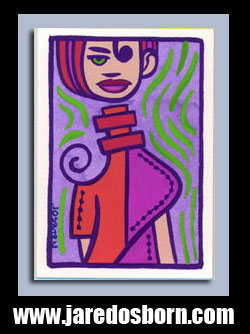When is a photographer not a photograph? That’s the question I have because I’ve been working on some photographs lately. By the time I get through with them they look much less like photographs than when I started.
Filters, airbrushing, and darkroom tricks have always been part of photography’s repertoire and some photographers have always pushed the boundary of “What is a photograph?” but now that we’re in the digital/Photoshop age the fence post is somewhere out in the mist.
There are certainly a lot of magazine covers that I wouldn’t call photographs. They’ve been touched up digitally so much that they bear only a resemblance to the original photo. They’re more akin to a painting than to a photo. Waists have been made outrageously thin, ribs removed, and all the skin tones have been replaced with smoothed out pixels. Those are usually referred to by detractors as “Barely a Photograph” but they’re in the photograph category none the less.
Earlier in the summer I was working on what I call my “Masked Photographs”. They are some of my photos of people in the streets except I draw masks on the subjects’ faces. They are not photo realistic masks but graphic ones. They’re not designed to make anyone think that the masks are real and actually in the photos but anyone looking at them would probably call them photographs. I call them photographs too.
What I was working on at the end of the summer is a bit different. There I was using an old Photoshop filter recipe of mine. Photoshop filters can radically alter a photograph and make it look like any number of things. They can make a photo look like a painting, a drawing, a bad photocopy, an old photograph, or any number of things. Most of the time I see Photoshop filters being used like a blunt instrument. A person takes a photo, runs it through a single filter, and it’s done. A radical change in appearance is what they were looking for and they got it.
Most old hands at Photoshop can recognize the exact filter that was used on a bluntly done photo. It’s not hard and we all tend to say, “That’s just a photo run through the Posterize filter”. That’s almost become a genre unto itself. No one questions if it’s a photo or not because we all know it is. Just a photo altered by a filter. One step away from an actual photo and easy to understand and categorize.
What I use is called a filter recipe. That’s when you use a series of filters and layer techniques to build up an image in whatever way you want. There is a lot of trial and error involved in finding exactly what you want but once it’s found it’s easily repeatable. An old hand at Photoshop will know in an instant that a filter recipe has been used to alter a photo but probably won’t know exactly how it was done. Hence it’s not in the photo altered by a filter category.
My own filter recipe that I use most often turns the photo into a graphic translation. That’s an old term for turning a shaded three dimensional image into an unshaded two dimensional one. The simplest way to do this is to make a black and white photocopy of a photograph. All of the various colors and shade in the photo are turned into two colors. Either black or white. The graphic translations I make are a little more complicated than that, I think I uses about eight shades of color, but are in that ballpark.
I also integrated type and writing into the photo. I like using words and images and have used them a lot in my art prints but now I’m also using them in my photos. If they are indeed photos. That’s the whole point of this rumination. I have no idea what to call them. For a brief time I was calling them photo mono-prints because I was only using one color to make them but then I stared making them using more than one color making the “Mono” in the name inaccurate. Plus the word mono-print is in use by another type of printmaking. So the name I’ve been using for them is completely wrong.
I don’t have any real philosophical reason to want to know what is a photo and what is not. I don’t really care because I’m not a photography purist. I just need a name to call these things I’m making. We humans name things so we can understand them and understand what each other is talking about. That’s why I need a name for them.

Discussion ¬